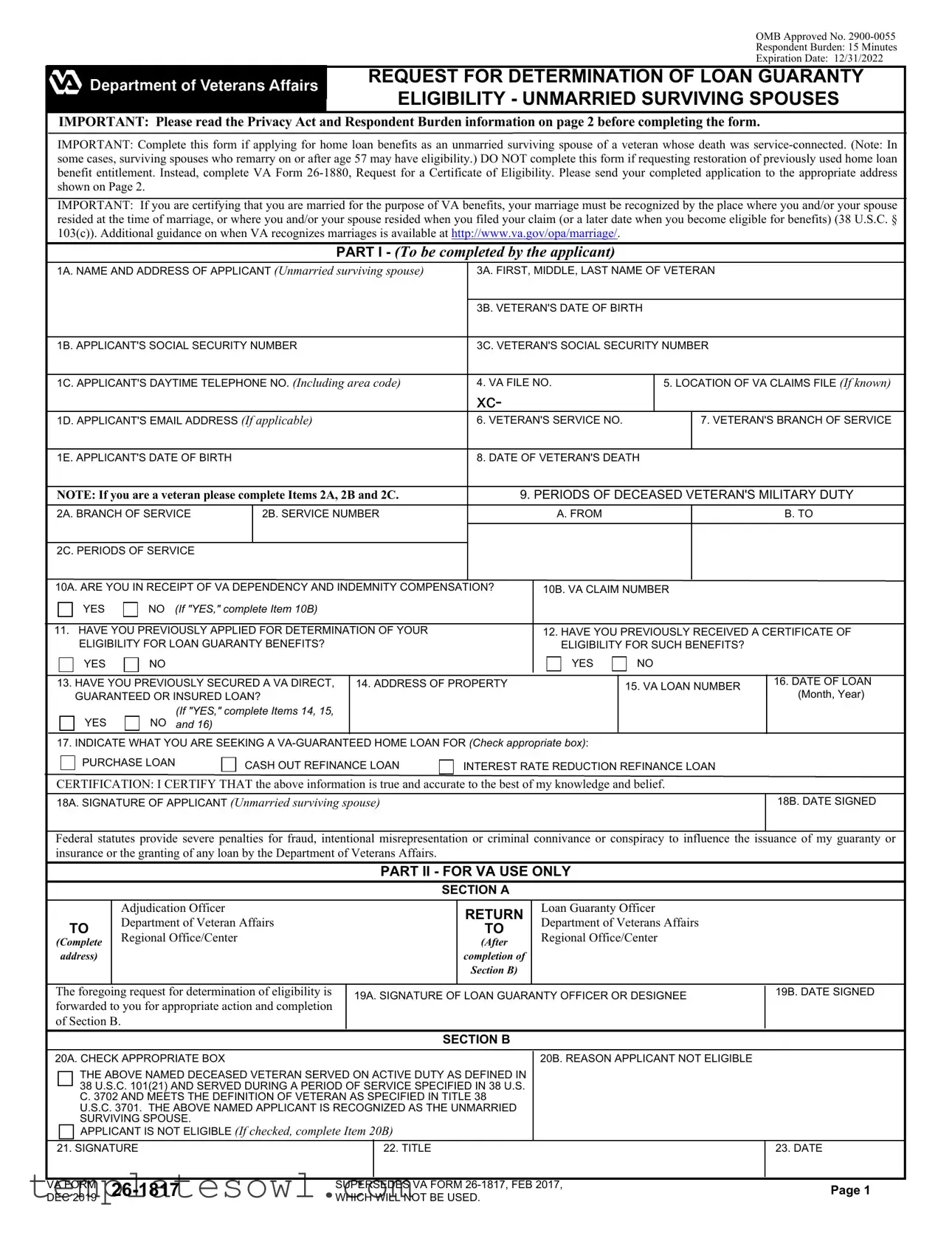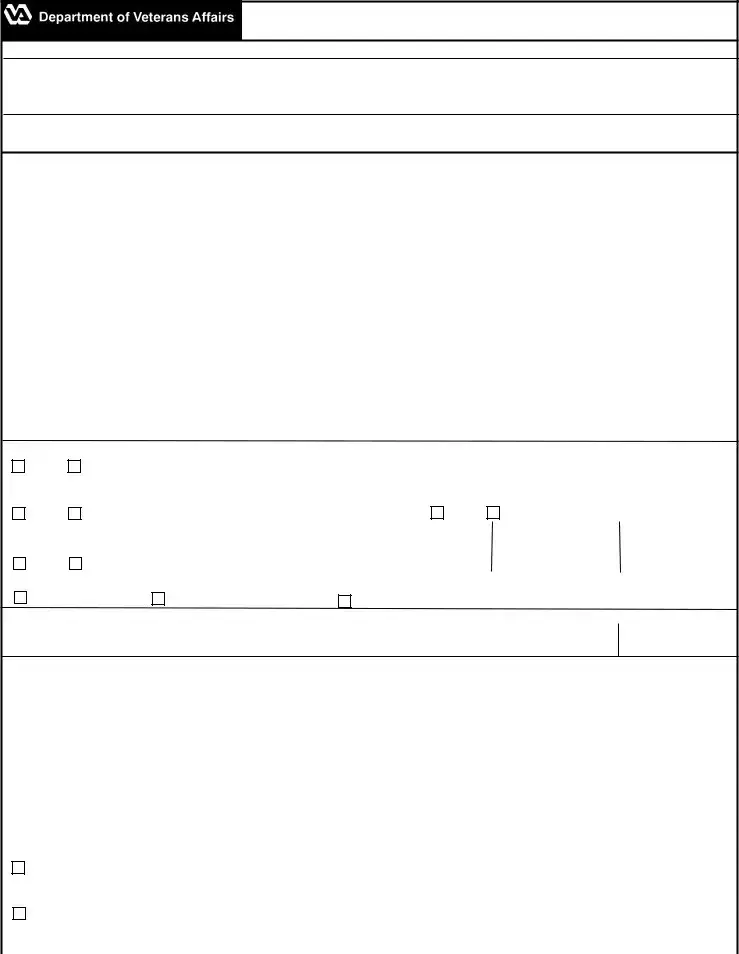Filling out the VA Form 26-1817 can be a complicated process. Several common mistakes often occur, which may delay the application or lead to denial of benefits.
Many individuals neglect to read the instructions carefully before beginning the application. Understanding the specific requirements outlined in the instructions can help avoid unnecessary errors. For instance, some applicants are unaware that the form is exclusively for unmarried surviving spouses of veterans whose deaths were service-connected. Failure to recognize this can result in submitting the wrong form altogether.
Another mistake is incorrect entry of personal information. Applicants must ensure that their names, social security numbers, and other critical details are accurately filled out. A simple typo can lead to complications, especially in verifying identity against federal records. Furthermore, not providing a daytime telephone number can hinder the processing of the application, as VA representatives may not be able to contact the applicant for clarifications.
In addition, some applicants skip the section where they must indicate whether they have applied for benefits before. The responses to questions about previous applications or eligibility certificates can significantly impact the review process. Consistency and transparency in this section are vital.
Understanding the context of eligibility is essential. Misunderstandings often arise regarding previous marriages. If a surviving spouse has remarried, even if the marriage was after the age of 57, they may still need to confirm their eligibility status, but some fail to do so. Ensuring the marriage is recognized by relevant authorities also is crucial.
A further common oversight is to bypass the certification section, where applicants must certify that the information provided is true to the best of their knowledge. Failure to sign this section can lead to automatic rejection of the application.
Inaccuracies concerning the veteran's information are also frequent. For instance, applicants must provide the veteran's date of birth and Social Security number correctly. Missing or incorrect details can complicate the verification process, leading to delays.
Poor organization is another issue. Collecting all necessary documents and information before starting can prevent frustration and errors during the filling process. Many applicants do not prepare adequately and, as a result, they miss critical data which can lead to incomplete applications.
Not addressing the submission requirements appropriately is also important. Failing to send the completed application to the proper VA regional office can result in unnecessary delays. Each region has specific addresses for submissions, and applicants must ensure they follow these guidelines.
Lastly, missing the deadline for submitting the application can jeopardize eligibility. It is critical to check the expiration date of the form being filled out, as submitting an outdated form can lead to automatic disqualification. Keeping track of dates and requirements is essential for ensuring timely completion.


